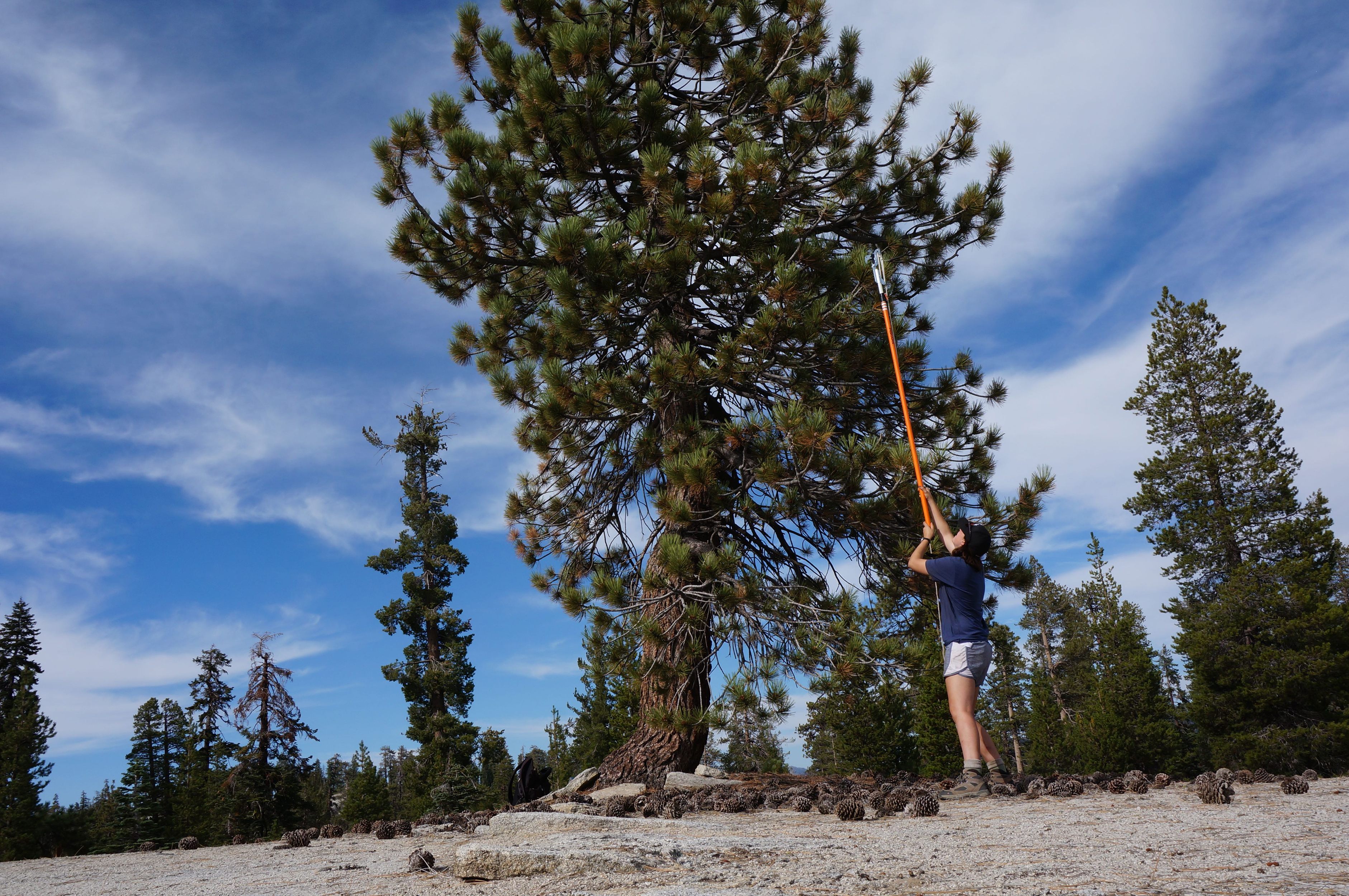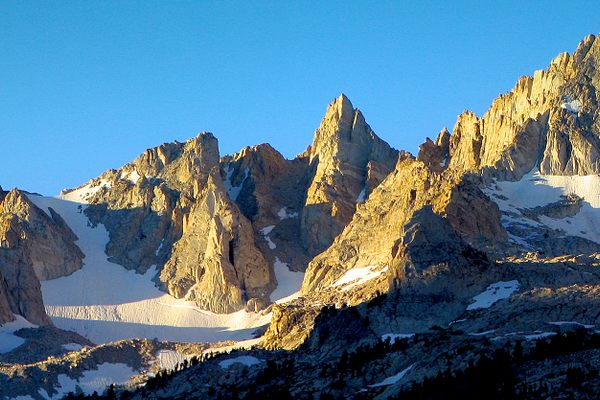Mountain Trees Love Dust
A new study highlights how the nutrients in dust feed plants along the Sierra Nevada mountain range.

Up in the atmosphere there are millions of tons of dust moving long distances across the globe. It’s akin to the way that rain clouds move around the world, but while rain gets our attention, most of time we don’t notice when dust is falling.
In 2014, a group of scientists decided to find out how much dust, exactly, falls in the Sierra Nevadas. Over a few months they collected dust from a site on the mountain range’s western slope, and they were surprised how thickly it was being deposited. As much as 45 percent of it was coming from across the ocean in Asia.
Clouds of dust can carry nutrients long distances, and some places are known to depend on dust deposits for survival. The Amazon, for instance, depends on dust from the Sahara to provide its nutrients. But mountains were thought to be mostly self-sufficient. In fact, no one had thought much at all about the impact of dust on mountainous ecosystems. But a new report, published today in Science Advances, suggests that dust may be contributing more to mountains than scientists had realized.
Mountains tend to have rich soil that’s created locally as bedrock erodes. Scientists had assumed that bedrock soil was providing most of the nutrients those mountain ecosystems might need. But after the discovery of just how much dust was falling on the Sierra Nevadas, a group of scientists from the University of Wyoming and the University of Michigan, three of whom worked on the earlier report, decided to dig deeper. Were the mountains’ plants actually using the nutrients that blew in with the dust? And where else might there be more dust than expected?
According to the new research, it looks like plants at the Sierra Nevada site are feasting on the nutrients that come with the dust. By measuring the presence of a neodymium isotope in the dust, soil, pine needles, and bedrock, the scientists were able to show that most of the neodymium at their study site came from the dust that fell on the site, not from bedrock-derived soil.
Neodymium itself isn’t vital to plant life, but since it’s concentrated in minerals full of phosphate—which is one of plants’ key nutrients—it’s a good indication of where plants are getting their phosphate from.
“A majority of the neodymium is derived from dust,” says the University of Wyoming’s Lindsay Arvin, the study’s lead author. “The magnitude of that was surprising. The trees seemed to be getting all of their phosphorus from dust.”
It’s not clear whether the trees are using the phosphorus provided by the dust because, like the leftovers at the front of the fridge, it’s the most convenient option, or because the metaphorical fridge is empty and they’d be deprived otherwise. But this new finding calls into question the assumption that mountain ecosystems source most of their nutrients from soil made from local bedrock.
The new paper also suggests that this could be the case in other surprising places. By modeling dust fluxes around the world, the researchers found that the phenomenon they’d first observed in the Sierra Nevadas might be more widespread—that significant concentrations of dust might be found in places not thought of as particularly dusty. That doesn’t mean that dust necessarily contributes to those ecosystems, but it gives Arvin and her colleagues a map for new places to look at the relationship between dust and mountain ecosystems.
“In nature there are a lot of processes that we don’t observe. That doesn’t mean they’re not happening,” says Arvin. Few people think about global movements of dust, especially as it contributes to soil. We don’t often notice dust falling from higher up in the atmosphere to the ground. But it’s shaping the world we inhabit, in ways that no one has ever quite realized before.






















Follow us on Twitter to get the latest on the world's hidden wonders.
Like us on Facebook to get the latest on the world's hidden wonders.
Follow us on Twitter Like us on Facebook